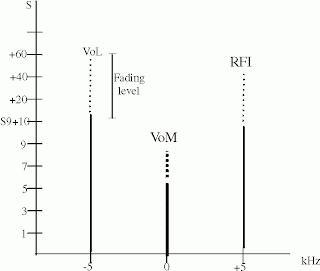TBL Tropical Band List
TBL Tropical Band List
By Willi Passman
By Willi Passman
As you may know from the logs posted in this blog , mostof them are refered in he lower spectrum of the SW band ie below 7MHz This part f the band is called tropical band Why : http://www.pateplumaradio.com/genbroad/tropical.htm
For me this part of the shortwave spectrum has a bigger interest thn the remain part as in these bands you will find stations mostly of the tropical part fo the earth ie Africa and Americas (eap South) with signals of special interest to a more dedicated DXer (a person who listens to more difficult signals then a common shortwave listener ) which can be heard more particualryl in late (local )afternoons to early mornings
This book was edited by Willi Passman , in Germany, till 2006 and covered this need as a very good and handy A4 sized guide with updates every 4 months I have been a subscriber to him for one year ,on 1997 , from which is the above photo (the last edition ).
As noticed in the last page , Willi collects this material from 12 newsletters and internet sources some of them are : EDXP (Au), ODXA (US), ADDX (GE), Dx window , Play DX , Relampago DX (JP), WRTH , Passband R , Cumbre , hard core Dx and others. BTW i was member of most of the above clubs and mailing lists !
Here is how he describes his list
Part A is sorted by frequency, within the frequency by continents and within the continents by countries in alphabetical order:
1.) Europe
2.) Africa
3.) Asia (3.1. Asian part of CIS, 3.2. Near East, 3.3. Far East, 3.4 Pacific)
4.) America (4.1 North, 4.2. Central, 4.3.South)
Part B is sorted by countries, within the countries by frequency and within the frequencies by output power, using declining order, so the strongest station will be at the top.
An additional part contains the stations having been inactive for a long time and stations which are not to be believed to return to the frequency soon.
MY edition February 1997 contains 1670 entries
Each entry contains the following info:
Code : how station is reported (often rarely etc )
QRG : the freq (separate column for variable /feeder , harmonic etc)
SA SW : sunrise and sunset
Additional info : times of transmission , languages , Identification etc
Here is a photo of the printing :
Practically this guide was very useful , more useful than WRTH ,. Actually every night those older times thi guide was very much helpful to me
I really miss this guide … It is very sad .
Today Eibi’s and Aoki’s lists are the up to date frequency listings (but lacking some important info as ID’s etc ) But surely the domestic band survey is also very good thatr goes next to TBL




Comments
Post a Comment